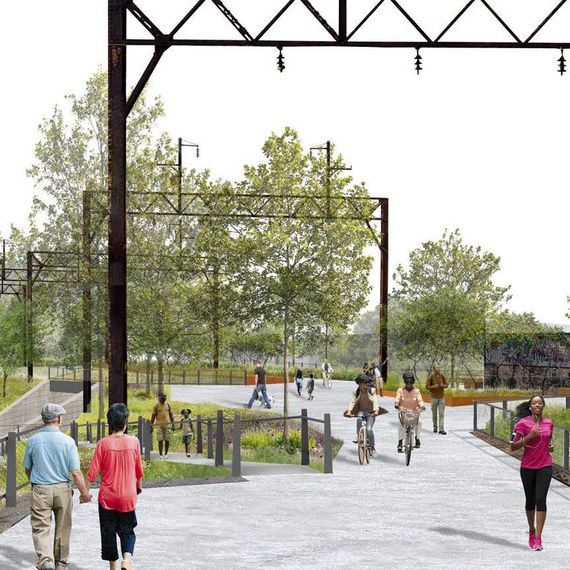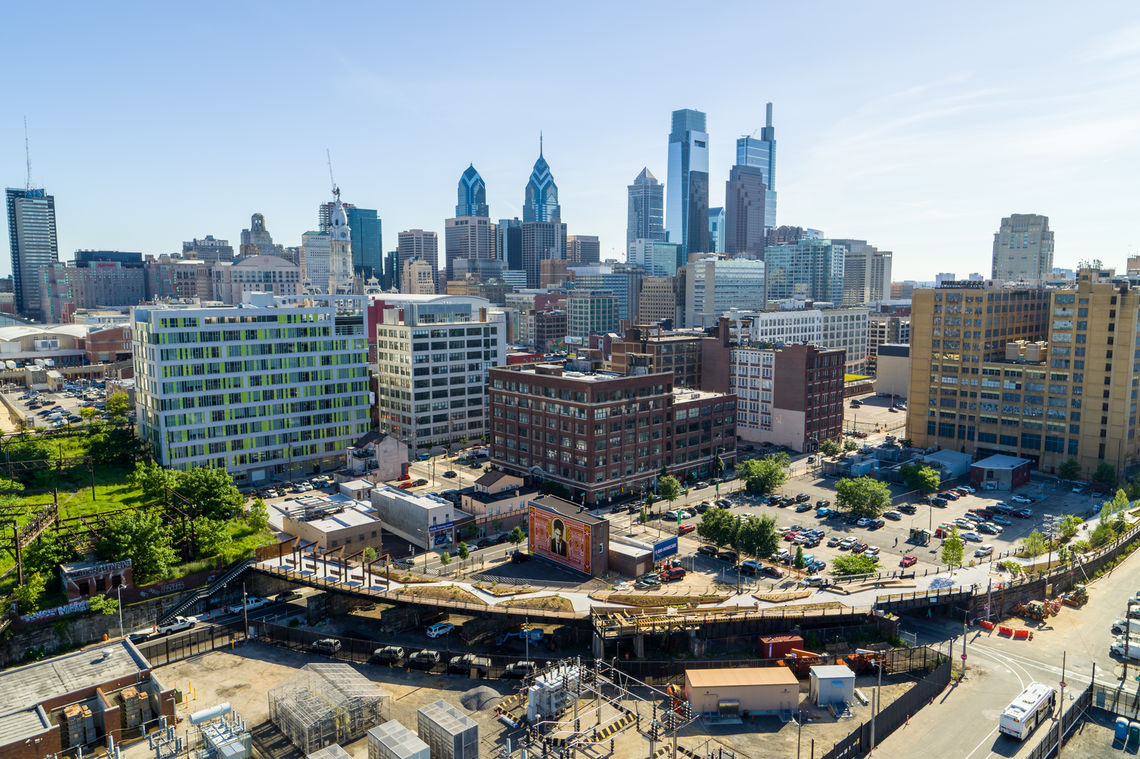With generous contributions of $50,000 from the William Penn Foundation and $25,000 from the Poor Richard’s Charitable Trust, the Center City District in 2010 commissioned an environmental and feasibility analysis of the entire viaduct. The consulting team was Urban Engineers; Cecil Baker + Partners; and Friends of the High Line, New York City. The City of Philadelphia retained Jones Lang LaSalle. The consultants jointly evaluated options that included total and partial demolition of the viaduct, as well as renovation alternatives, and assessed the potential impact of each option on real estate and community development in the area.
The study revealed that renovating the viaduct was far less expensive than demolishing it (at a cost of $50 million) and that significant environmental liabilities and costs could be minimized by capping and covering any contaminated soil that might still exist in the fill beneath the tracks. Further, the team confirmed that new housing could easily be constructed on the triangular vacant parcels that are adjacent to the viaduct and that a transformation of the viaduct into a park would have a far more beneficial impact on development in the area than the more expensive alternative of demolishing the structure and disposing of potentially contaminated waste.
In 2011, based on these conclusions, and with further generous contributions of $75,000 from the William Penn Foundation and $25,000 from Poor Richard’s Charitable Trust, the Center City District commissioned a concept and schematic design study, which was conducted by Urban Engineers and Studio| Bryan Hanes. The study, which focused on the SEPTA-owned spur only, was prepared in partnership with community stakeholders and the Philadelphia Department of Commerce and Department of Parks & Recreation. It began with a neighborhood meeting in fall 2011 to discuss community preferences and aspirations for the viaduct. In January 2012, the design team presented multiple design options at a community meeting with residents, property owners, and businesses from the area. Following the meeting, an online survey was conducted in which more than 50 participants expressed their preferences and provided extensive comments. The community participants strongly favored making the park an informal, leafy green space with plenty of grass and flowering plants, and with room to walk and sit. They wanted the park to maintain the industrial authenticity of its origins, while still meeting modern safety, code and access requirements.
In March 2012, Studio Bryan Hanes and Urban Engineers, incorporating the preferences cited by community participants, presented renderings of a new public park on the SEPTA spur. The design called for entrances to the viaduct on North Broad Street at Noble Street, at 13th and Noble, and on Callowhill between 11th and 12th. The response from the community was enthusiastic, resulting in the selection of a preferred schematic design alternative.
Through a grant from the city Department of Commerce to the Center City District, Urban Engineers and Studio Bryan Hanes completed construction documents and a cost estimate for the first phase of the project. Construction funding was provided by generous contributions from the William Penn Foundation, the Knight Foundation, The McLean Contributionship, the Commonwealth of Pennsylvania and the City of Philadelphia.
Construction began on October 31, 2016 with funding from an enormous range of friends and supporters, including: the Commonwealth of Pennsylvania, the City of Philadelphia, the William Penn Foundation, the Knight Foundation, Poor Richard’s Charitable Trust, The McLean Contributionship, a host of individuals and the Friends of The Rail Park. On June 14, 2018, The Rail Park opened to the public with a festive ribbon-cutting event attended by city and state officials, community leaders, philanthropic organizations, and hundreds of Philadelphia residents.
 CCD Foundation
CCD Foundation
 News
News